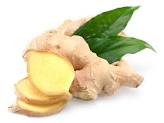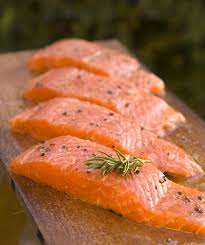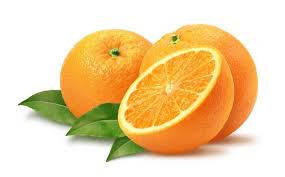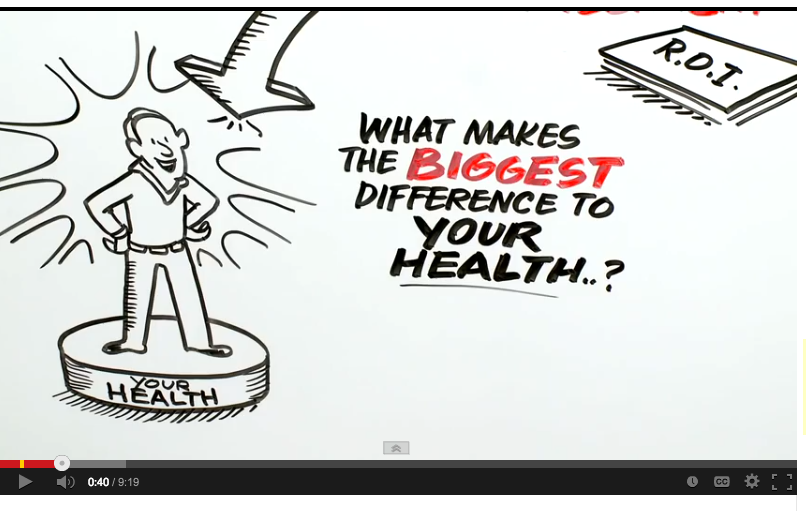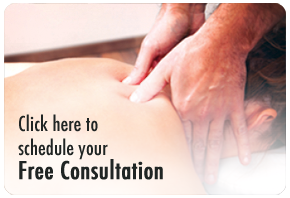Before reaching for a bottle of painkillers, try adding some of these 8 Foods that Fight Pain to your diet.
Other than just great taste, there are foods that have the ability to fight pain and reduce inflammation. Dallas chiropractor, Dr. Jeff Manning, says that adding these foods to your diet, especially combined with chiropractic care, can help your body to heal more quickly. “Foods can greatly affect inflammation in the body; some artificial sweeteners can add to or increase inflammation, while other foods like ginger can do the exact opposite,” says chiropractor Jeff Manning of Manning Wellness Clinic in Dallas.
The following is a great list of 8 Foods that Fight Pain. You don’t need to, nor should you, try to add all at once, but trying one at a time will help you determine which work best for you.
And, according to Greatist.com, the winners are….
8 Natural Foods to Eat for Pain Relief
Believe it or not, those healthy fruits, veggies, and whole grains we try to pack in our diets may do more than just feed our bodies well — many of them are considered to have anti-inflammatory properties. Sometimes inflammation is a good thing, we’ll give you that — it protects our body when we’ve been injured — but it can also be painful. (Think asthma and arthritis, inflamed sore throats, and cuts or scrapes.) While some have linked [1] certain foods (including chocolate, eggs, wheat, meat, and corn) to causing inflammation, there’s also evidence that a few select delectables could help prevent it, too ((Dietary strategies for improving post-prandial glucose, lipids, inflammation, and cardiovascular health [2]. O’Keefe, J.H., Gheewala, N.M., O’Keefe, J.O. Mid America Heart Institute and University of Missouri-Kansas City, Kansas City, MO. Journal of the American College of Cardiology, 2008 Jan 22;51(3):249-55. )). Here are eight foods that research suggests may actually help reduce pain.
1. Ginger. Ginger [3] is basically a wonder root. It combats nausea and motion sickness, and fights off pain with itsanti-inflammatory [4] properties ((Ginger — an herbal medicinal product with broad anti-inflammatory actions [5]. Grzanna R., Lindmark L., Frondoza C.G., RMG Biosciences, Inc. Journal of Medicinal Food, 2005 Summer;8(2):125-32.)). Some especially great news for the ladies: One study showed that ginger (specifically in the form of a 250g or 500g capsule of powdered ginger) was as effective as ibuprofen in relieving menstrual pain ((Comparison of effects of ginger, mefenamic acid, and ibuprofen on pain in women with primary dysmenorrhea. [6] Ozgoli G., Goli M., Moattar F., Nursing and Midwifery School, Shahid Beheshti University of Medical Sciences, Tehran, Iran. Journal of Alternative and Complementary Medicine, 2009 Feb;15(2):129-32.))! Plus, ginger can be ingested a variety of ways, from supplements, to tea and cookies [7], to stir fry [8].
2. Salmon. Not only is salmon tasty and a healthy protein, but it’s full of omega-3 fatty acids, which have been shown to reduce arthritic pain (especially in the neck and back) ((Omega-3 fatty acids (fish oil) as an anti-inflammatory: an alternative to nonsteroidal anti-inflammatory drugs for discogenic pain. [9], Maroon J.C., Bost J.W., Department of Neurological Surgery, University of Pittsburgh Medical Center, Pittsburgh, PA, USA. Surgical Neurololgy, 2006 Apr;65(4):326-31.)). In one study, the relief experienced from consuming omega-3s in the form of a fish oil supplement was comparable to the relief experienced from taking ibuprofen. Chow down on some of those omega-3s with this baked salmon with avocado yogurt sauce [10] tonight.
3. Coffee. Just one more excuse to grab that second cup of Joe! Research suggests caffeine can reduce pain in those suffering from exercise-induced muscular injury and pain ((Caffeine attenuates delayed-onset muscle pain and force loss following eccentric exercise. [11] Maridakis V., O’Connor P.J., Dudley G.A., et. al. Department of Kinesiology, University of Georgia, Athens, GA 30602-6554, USA. Journal of Pain: Official Journal of the American Pain Society, 2007 Mar;8(3):237-43.)). Not only that, when taken with a standard dose of pain reliever (ibuprofen, for example), one study found that a 100mg to 130mg caffeine supplement — equal to about the amount of caffeine in one cup of coffee — increased pain relief ((Caffeine as an analgesic adjuvant for acute pain in adults. [12], Derry C.J., Derry S., Moore R.A., Pain Research and Nuffield Department of Clinical Neurosciences (Nuffield Division of Anaesthetics), University of Oxford, Oxford, UK. Cochrane Database Systematic Review, 2012 Mar 14;3:CD009281.)).
4. Echinacea and Sage. Got an aching throat? Some research shows that throat sprays containing sage or echinacea can help provide relief from that nasty sore throat ((Echinacea/sage or chlorhexidine/lidocaine for treating acute sore throats: a randomized double-blind trial., [13] Schapowal A., Berger D., Klein P., Suter A., Allergy Clinic, CH-7302 Landquart, Switzerland. European Journal of Medical Research, 2009 Sep 1;14(9):406-12.)), though there have been few other studies on this benefit, so the evidence isn’t hulk strong [14]. Another survey looking at 14 different studies found that echinacea [15] can decrease the number of cold infections caught, and reduce their durations ((Evaluation of echinacea for the prevention and treatment of the common cold: a meta-analysis. [16] Shah S.A., Sander S., White C.M., University of Connecticut School of Pharmacy, Storrs, CT. The Lancet Infectious Diseases, 2007 Jul;7(7):473-80.)). Sage is easy to find at most grocery stores and is also especially tasty in any of these recipes [17], while echinacea is more commonly found in pill and ointment form. When choosing to take a supplement like echinacea, be aware: Supplements aren’t regulated by the FDA, so manufacturers can often get away with making unproven claims [18] about both the contents of the pills and the benefits of those contents.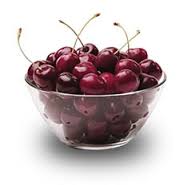
5. Tart Cherries. Turns out tart cherries [19] are good for more than causing a pucker face. Studies have found they can help treat gout [20](a painful form of arthritis that causes swollen, hot, red joints caused by a buildup of uric acid in the blood) ((Cherry consumption and decreased risk of recurrent gout attacks [21]. Zhang, Y., Neogi, T., Chen, C., et al. Boston University, Boston, MA. Arthritis and Rheumatism, 2012 Dec;64(12):4004-11.)) ((Consumption of cherries lowers plasma urate in healthy women [22]. Jacob, RA., Spinozzi, GM., Simon, VA., et al. U.S. Department of Agriculture/ARS Western Human Nutrition Research Center, University of California at Davis, Davis, CA. The Journal of Nutrition, 2003 Jun;133(6):1826-9. )). But it’s not just for gout — athletes can benefit, too. In one study, those who drank tart cherry juice [23] for seven days prior to an intense running event showed reduced muscle-pain after the race ((Efficacy of tart cherry juice in reducing muscle pain during running: a randomized controlled trial. [24], Kuehl K.S., Perrier E.T., Elliot D.L., Department of Medicine, Oregon Health & Science University, Portland, OR. Journal of the International Society of Sports Nutrition, 2010 May 7;7:17.)) ((Dietary beta-cryptoxanthin and inflammatory polyarthritis: results from a population-based prospective study. [25]Pattison D.J., Symmons D.P., Lunt M., Arthritis Research Campaign Epidemiology Unit, The University of Manchester, Manchester, United Kingdom. American Journal of Clinical Nutrition, 2005 Aug;82(2):451-5.)). Drink up!
6. Whiskey. No, we do not recommend whiskey for a broken heart or curing any sort of emotional pain. But, it turns out adding a spoonful to warm water [26] may just do the trick to kick that pesky sore throat.
7. Oranges. While vitamin C has been linked to helping prevent the onset of colds [27] and respiratory infections, an antioxidant called beta-cryptoxanthin [28], found in oranges and other orange fruits and veggies such as sweet potato and cantaloupe, has been found to help reduce the risk of anti-inflammatory conditions like rheumatoid arthritis ((Dietary beta-cryptoxanthin and inflammatory polyarthritis: results from a population-based prospective study. [25]Pattison D.J., Symmons D.P., Lunt M., Arthritis Research Campaign Epidemiology Unit, The University of Manchester, Manchester, United Kingdom. American Journal of Clinical Nutrition, 2005 Aug;82(2):451-5.)). Another reason to get out that juicer and start making fresh OJ each day. (Or, you know, just eat an orange.)
8. Evening Primrose. Usually found as an oil, this flower’s powers have been linked to treating atopic dermatitis (a chronic itchy skin condition), rheumatoid arthritis, and PMS symptoms ((Evening primrose oil is effective in atopic dermatitis: a randomized placebo-controlled trial. [29] Senapati S., Banerjee S., Gangopadhyay D.N., Department of Dermatology, Calcutta National Medical College, Kolkata, India. Indian Journal of Dermatology, Venereology and Leprology, 2008 Sep-Oct;74(5):447-52.)) ((Herbal therapy for treating rheumatoid arthritis., Cameron M., Gagnier J.J., Chrubasik S [30]., School of Exercise Science, Australian Catholic University, McAuley at Banyo, 1100 Nudgee Road, Banyo, QLD, Australia. Cochrane Database of Systematic Reviews, 2011 Feb 16;(2):CD002948.)). The gamma-inolenic acid in the oil has anti-coagulant effects that may help reduce the effects of cardiovascular illnesses ((Assessment of anticoagulant effect of evening primrose oil. [31], Riaz A., Khan R.A., Ahmed S.P., Department of Pharmacology, University of Karachi, Karachi-75270, Pakistan. Pakistan Journal of Pharmaceutical Sciences, 2009 Oct;22(4):355-9.)).
Check out this list for more. http://greatist.com/health/foods-pain-relief


